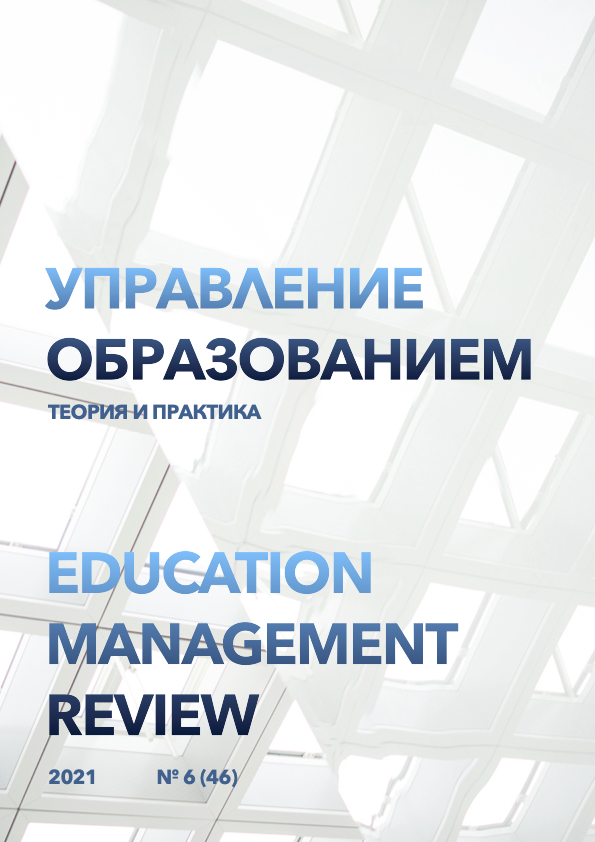Methodological development of material on teaching financial management in higher educational institutions
DOI:
https://doi.org/10.25726/x4874-7776-4464-wKeywords:
Management, teaching, finance, university, developmentAbstract
The constitutional autonomy of the university and academic freedom are fundamental values of the European Higher Education Area. They play an important role in ensuring and improving the quality of higher education in a democratic society. On the one hand, the institutional autonomy of the university is considered as a dimension of democracy as a basic characteristic of the academic community, on the other - as a means of improving the quality of higher education. The key aspects of institutional autonomy are the ability of higher education institutions to establish and implement their own policies and priorities in teaching, research, as well as other aspects of activities within their mission. In order to reveal the essence of the concept of "institutional autonomy of the university" in the European Higher Education Area, let us turn to the analysis of key strategic documents that determine the priorities of the modern development of higher education.
References
Adalbert, J. R., & Ilyas, A. M. (2022). A focus on the future of opioid prescribing: implementation of a virtual opioid and pain management module for medical students. BMC Medical Education, 22(1). https://doi.org/10.1186/s12909-021-03058-z
Batista, J. P. B., Torre, C., Sousa Lobo, J. M., & Sepodes, B. (2022). A review of the continuous professional development system for pharmacists. Human Resources for Health, 20(1). https://doi.org/10.1186/s12960-021-00700-1
Busoi, G., Ali, A., & Gardiner, K. (2022). Antecedents of emotional labour for holiday representatives: A framework for tourism workers. Tourism Management, 89. https://doi.org/10.1016/j.tourman.2021.104450
de Wit, M., Zipfel, N., Horreh, B., Hulshof, C. T. J., Wind, H., & de Boer, A. G. E. M. (2022). Training on involving cognitions and perceptions in the occupational health management and work disability assessment of workers: development and evaluation. BMC Medical Education, 22(1). https://doi.org/10.1186/s12909-021-03084-x
Florom-Smith, A. L., Klingenberger, J. K., & DiBiase, C. P. (2022). Commercial space tourism: An integrative review of spaceflight participant psychological assessment and training. REACH, 25–26. https://doi.org/10.1016/j.reach.2021.100043
Maraza-Quispe, B., Valderrama-Chauca, E. D., Cari-Mogrovejo, L. H., Apaza-Huanca, J. M., & Sanchez-Ilabaca, J. (2022). A predictive model implemented in knime based on learning analytics for timely decision making in virtual learning environments. International Journal of Information and Education Technology, 12(2), 91–99. https://doi.org/10.18178/ijiet.2022.12.2.1591
McLean, S., Coventon, L., Finch, C. F., Dallat, C., Carden, T., & Salmon, P. M. (2022). Evaluation of a systems ergonomics-based incident reporting system. Applied Ergonomics, 100. https://doi.org/10.1016/j.apergo.2021.103651
Rowe, S. Y., Ross-Degnan, D., Peters, D. H., Holloway, K. A., & Rowe, A. K. (2022). The effectiveness of supervision strategies to improve health care provider practices in low- and middle-income countries: secondary analysis of a systematic review. Human Resources for Health, 20(1). https://doi.org/10.1186/s12960-021-00683-z
Seufert, C., Oberdörfer, S., Roth, A., Grafe, S., Lugrin, J.-L., & Latoschik, M. E. (2022). Classroom management competency enhancement for student teachers using a fully immersive virtual classroom. Computers and Education, 179. https://doi.org/10.1016/j.compedu.2021.104410
Simonson, R. J., Keebler, J. R., Blickensderfer, E. L., & Besuijen, R. (2022). Impact of alarm management and automation on abnormal operations: A human-in-the-loop simulation study. Applied Ergonomics, 100. https://doi.org/10.1016/j.apergo.2021.103670
Sprajcer, M., Thomas, M. J. W., Sargent, C., Crowther, M. E., Boivin, D. B., Wong, I. S., … Dawson, D. (2022). How effective are Fatigue Risk Management Systems (FRMS)? A review. Accident Analysis and Prevention, 165. https://doi.org/10.1016/j.aap.2021.106398
Tanvi Newaz, M., Ershadi, M., Carothers, L., Jefferies, M., & Davis, P. (2022). A review and assessment of technologies for addressing the risk of falling from height on construction sites. Safety Science, 147. https://doi.org/10.1016/j.ssci.2021.105618
Wang, D., Sheng, Z., Wang, X., Griffin, M. A., Zhang, Y., & Wang, Z. (2022). How team safety stressors affect proactive and prosocial safety behaviors: Felt safety responsibility and affective commitment as mediators. Safety Science, 147. https://doi.org/10.1016/j.ssci.2021.105625
Yang, F., & Miang Goh, Y. (2022). VR and MR technology for safety management education: An authentic learning approach. Safety Science, 148. https://doi.org/10.1016/j.ssci.2021.105645




